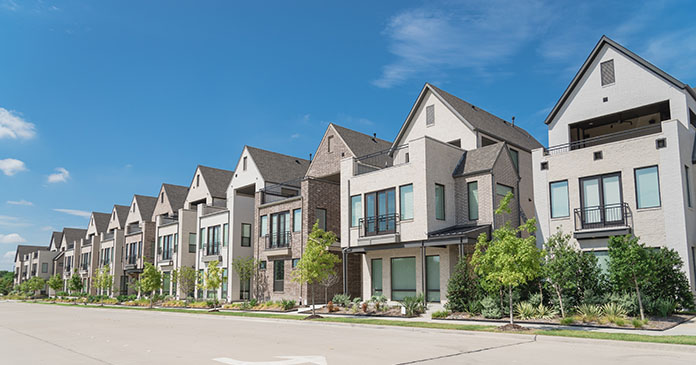With shelter inflation accounting for a staggering 90 percent of the overall inflation rate last month, the National Association of Home Builders (NAHB) is calling on policymakers at all levels of government to take actions that will help boost the nation’s housing supply in order to ease a stubbornly high housing inflation rate that is harming the overall economy.
The July Consumer Price Index (CPI) reading was 3.2 percent, but data from the Bureau of Labor Statistics show that more than 90 percent of the headline gain for the CPI was due to shelter inflation, a combination of rent and owner’s equivalent rent, which was up 7.7 percent from a year ago.
“The Federal Reserve shouldn’t have to fight inflation on its own, as the central bank’s ability to address rising housing costs is extremely limited because shelter cost increases are driven by a lack of affordable supply and increasing development costs,” said NAHB Chairman Alicia Huey, a custom home builder and developer from Birmingham, Ala.
With shelter costs accounting for the lion’s share of inflation in the economy, and a nationwide shortage of 1.5 million housing units, building more homes is the only way to tame inflation, satisfy unmet demand, achieve a healthy supply-demand balance in the for-sale and rental markets and ease the nation’s affordability crisis.
“Policymakers at other levels of government can help the Fed in the effort to bring inflation lower by improving the efficiency of the residential construction market,” said Huey. “Policy changes such as obtaining a new softwood lumber agreement with Canada, speeding up permit approval times, providing resources for skilled labor training and repealing inefficient regulatory rules will enable more construction and yield more inventory for a market that is critically undersupplied.”
Additionally, higher interest rates are restricting housing supply by making financing for acquiring and developing land more expensive, and increasing the interest rates for construction loans. The rapid increase for mortgage rates is also restricting supply in the short-run via the mortgage rate lock-in effect, which causes many home owners to hold onto their existing home to preserve their low mortgage interest rate.
“A focus on policies that will enable builders to construct more homes will help tame inflation by working to achieve a healthy supply-demand balance in the marketplace, move housing and the economy to higher ground and ease the nation’s housing affordability crisis,” said Huey.












